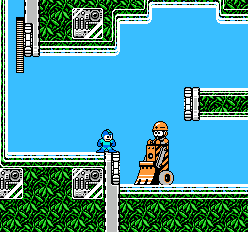- It has a smooth framerate, not a choppy one. 60 frames per second is my personal baseline, although some people would be fine with 30 FPS or even less, depending on the particular game.
- It has minimal, infrequent or well-disguised load times.
- It has controls that are responsive. That means when the player inputs something, whether choices in a menu or player movement in a 3D action game, the game reacts quickly.
- It has little dead time--time spent by players where they're just unnecessarily waiting for something to happen. Times like when text is slowly crawling across the screen rather than appearing quickly, or when the player is waiting for the AI to calculate its moves, or when switching screens means long, slow fade-in/fade-out transitions.
Each of these categories deserves to be expounded on at length, but for now these brief overviews should give you a basic idea of what "speediness" actually means.
Speediness, in my view, is essential. Not just for the obvious genres, like racing games, fighting games, and the like, but for all games in all genres. A speedy game is a more immediate, immersive game. If a player presses a button and something happens right away, that player will naturally feel more strongly connected to the game--and they will be more strongly connected. Conversely, if there are obstacles to this connection, such as input lag, poor responsiveness, a lack of immediate feedback, and so on, the player will be removed from the experience over and over.
Immersiveness isn't the only reason that speediness is important. In fact, it's not even the most important reason. The most important reason is this: a speedy game has less boring filler/padding than a sluggish game. To illustrate this principle, let's take two hypothetical strategy games. Strategy Game A is speedy, and Strategy Game B is sluggish, with poor input responsiveness, slow load times, and other bad stuff. In all other respects, they are identical.
So why does Strategy Game B have so much more boring filler than Strategy Game A? Simple. When you play an hour of Strategy Game A, you get an hour of fun. When you play an hour of Strategy Game B, you get less than an hour of fun. The time spent on waiting for your button presses to register, or waiting for the AI to calculate its next move, or watching a load screen, is something that everyone can agree is not fun. It's pure wasted time.
This isn't just a theoretical concern. Plenty of games have suffered from this lack of speediness, both sales-wise and in terms of critical reaction. Sometimes, people just won't find these sluggish games quite as fun, despite not realizing the specific reasons for their dislike. Look at the latest main-series Pokemon game, and its needlessly protracted battles, with long pauses that occur for no apparent reason and painfully slow battle text. Look at the first Yakuza game on the PS2, with its frequent lengthy load times, and then compare that to the vast improvements for Yakuza 2. Look at the tepid reception for most recent JRPGs, then compare that to the adulation for relatively speedy JRPGs like Dragon Quest 8, Shin Megami Tensei: Nocturne, or SNES oldies like Chrono Trigger or Final Fantasy 6.
Those are just the slightly less obvious examples. When you look in the realm of games like FPSes, compare the wild success of the ultra-speedy Call of Duty 4 to its sluggish competitors. Look at 3D action games; the speedy, 60-FPS titles like God of War 2, Devil May Cry 4, and Ninja Gaiden 2 dominate the genre.
Game design is a tricky art. Something that can work in one game may not work in another. There are virtually no techniques that will automatically make any game better. But when it comes to speediness, ignore that, and listen to this:
A game automatically becomes better if it's speedy. A game automatically becomes worse if it's sluggish.
It's really that simple.



